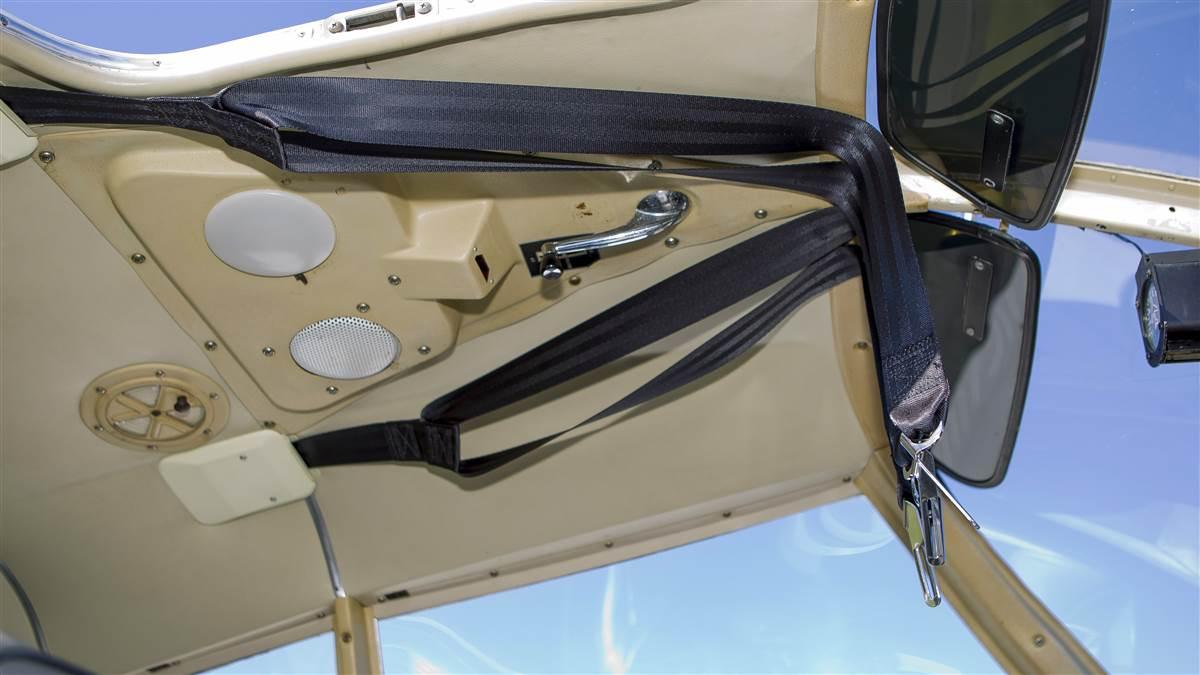What Am I? Seat belts
Your best safety equipment
One of the easiest, cheapest, and most effective ways to reduce risk in a general aviation airplane is to make sure it is equipped with adequate passenger restraints—seat belts and shoulder harnesses.

Lap belts were standard equipment in general aviation airplanes; more recently, shoulder harnesses have become standard in newer aircraft. If you buy an older airplane, you may install shoulder harnesses with an aftermarket kit. Fortunately, it's a fairly inexpensive process and gives a great deal of added security.
In older airplanes you may find lap belts only. Fortunately, owners can install aftermarket kits in older airplanes to equip them with highly effective shoulder restraints—and even airbags, if desired.
The FAA says the proper use of shoulder harnesses, in addition to seat belts, reduces major injuries in GA crashes by 88 percent, and reduces fatalities by 20 percent. Wear your seat belt and shoulder harness on every flight. As a private or sport pilot and eligible to carry a passenger, you will want to ensure your right-seater knows how to fasten and quickly unfasten any belts and harnesses. Make it part of your passenger briefing.

Jill W. Tallman
AOPA Technical Editor
AOPA Technical Editor Jill W. Tallman is an instrument-rated private pilot who is part-owner of a Cessna 182Q.
 Three-point shoulder harness. Similar to a car’s shoulder harness, the three-point system fastens at the waist and provides additional protection for the head and torso with a strap across the chest.
Three-point shoulder harness. Similar to a car’s shoulder harness, the three-point system fastens at the waist and provides additional protection for the head and torso with a strap across the chest.  Four-point and five-point harnesses. Frequently installed in older airplanes as after-market equipment, the four-part harness has two waist belts plus two shoulder straps that come down over the wearer’s chest to attach at the center. Five-point harnesses are a favorite of aerobatic pilots. In addition to the two shoulder straps and two waist belts, a fifth strap between the legs helps to keep pilots in place. All straps fasten over the wearer’s hips.
Four-point and five-point harnesses. Frequently installed in older airplanes as after-market equipment, the four-part harness has two waist belts plus two shoulder straps that come down over the wearer’s chest to attach at the center. Five-point harnesses are a favorite of aerobatic pilots. In addition to the two shoulder straps and two waist belts, a fifth strap between the legs helps to keep pilots in place. All straps fasten over the wearer’s hips.  Airbag seat belts. Automobile technology transitioned to general aviation in the form of aftermarket seat belts that have airbags in the shoulder or waist straps. Airbag seat belts came onto the scene around 2001 and are standard equipment on many new aircraft. The technology can sense the difference between an impact and turbulence or a hard landing, so there are no worries about accidental deployment.
Airbag seat belts. Automobile technology transitioned to general aviation in the form of aftermarket seat belts that have airbags in the shoulder or waist straps. Airbag seat belts came onto the scene around 2001 and are standard equipment on many new aircraft. The technology can sense the difference between an impact and turbulence or a hard landing, so there are no worries about accidental deployment. 

